Zinc alloy is an alloy composed of zinc as the base metal and other elements as alloying elements.
It is a metal alloy composed of zinc and other metal elements, usually including low-temperature alloying elements such as aluminum, copper, magnesium, chromium, lead and titanium.
Zinc, as the main component, can significantly improve its physical, chemical, electrical and corrosion resistance properties when combined with other metals.
Here are some key aspects of zinc alloys:
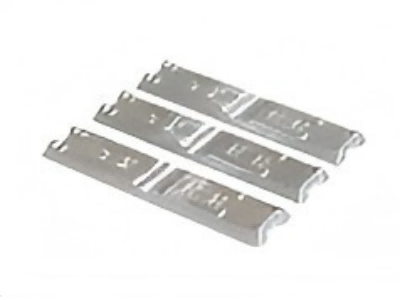
Composition and classification of zinc alloys
- Common alloying elements
- Classification based on composition
Zinc alloys are alloys consisting of zinc combined with other metal elements. It usually including low-temperature alloying elements such as aluminum, copper, magnesium, cadmium, lead and titanium.
As a base metal, zinc can significantly improve its physical, chemical and mechanical properties by combining it with other elements, making it widely used in several industries.
Common alloying elements:
Elements such as aluminum, copper, magnesium, and tin are often added to zinc. For example, in the zinc – aluminum alloy system, aluminum can be present in varying amounts.
A typical zinc – aluminum alloy might have 3 – 5% aluminum. The addition of aluminum improves the strength and hardness of the alloy.
Classification based on composition:
- Ordinary zinc alloys:
These are relatively simple in composition, mainly consisting of zinc with small amounts of other elements.
They general applications such as casting small parts like door handles and decorative items.
- High – strength zinc alloys:
These contain a more complex combination of alloying elements.
For instance, some high – strength zinc alloys may have a combination of copper, magnesium, and titanium.
These alloys have higher mechanical properties such as tensile strength and fatigue resistance, making them suitable for more demanding applications like automotive components that need to withstand higher loads and stresses.
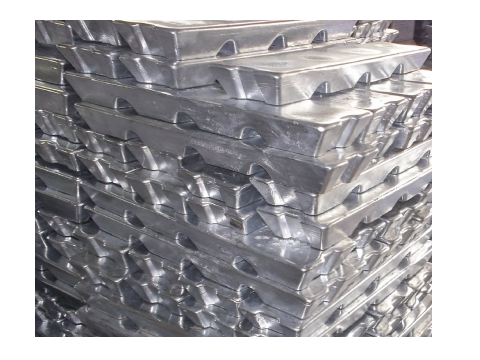
What Color Is Zinc Alloy?
Without any processing, zinc alloy will show the same bright silver tone as zinc, but many times the zinc alloys we see contain other metals or additives, so some zinc alloys will show other colors.
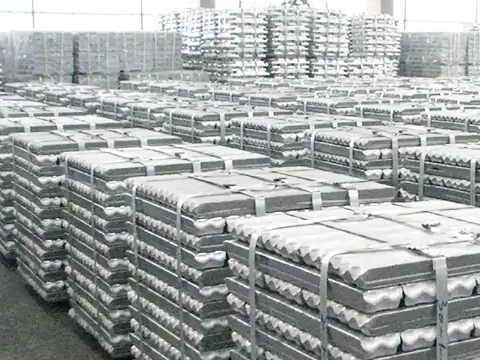
Properties of zinc alloys
- Mechanical properties
- Physical properties
Mechanical properties:
- Strength:
Zinc alloys can have a wide range of strength levels.
Ordinary zinc alloys typically have a tensile strength in the range of 200 – 300 MPa. High – strength zinc alloys can reach tensile strengths of 400 – 500 MPa or even higher, depending on the specific alloy composition and heat treatment process.
For example, a well – designed zinc – copper – magnesium alloy, after proper heat treatment, can achieve a high tensile strength suitable for structural parts.
- Hardness:
The hardness of zinc alloys also varies.
Some decorative zinc alloys have a relatively low hardness (around 70 – 90 HB) to facilitate easy machining and finishing processes like polishing and plating.
In contrast, high – strength zinc alloys used in wear – resistant applications may have a hardness of 120 – 150 HB or more.
Physical properties:
- Density:
The density of zinc alloys is generally around 6.5 – 7.0 g/cm³.
This makes them heavier than some other common engineering materials like aluminum alloys (which have a density of around 2.7 g/cm³), but lighter than many steel alloys.
The relatively high density can be advantageous in applications where weight is not a critical concern but where the material needs to provide a certain level of mass for stability or damping purposes.
- Melting point:
The melting point of zinc alloys is relatively low. It is typically in the range of 380 – 450°C. Low melting point makes them easy to cast using processes such as die casting and sand casting.
It allows for the production of complex – shaped parts with thin walls and intricate details, which is why zinc alloys are widely used in the manufacturing of small – to – medium – sized parts with complex geometries.
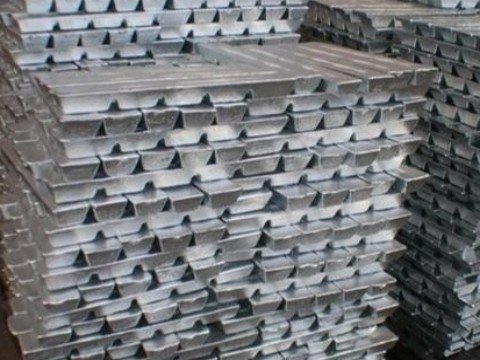
What Are the Different Types of Zinc Alloys?
Zinc alloys several types based on their composition and properties. Here are some of the main types:
Cast Zinc Alloys
- Zamak Alloys: These are the most common type of cast zinc alloys, known for their excellent casting properties. They have a relatively low melting point and good mechanical properties. Common grades include Zamak 2, Zamak 3, and Zamak 5.
- Zinc-Aluminum Alloys: These alloys contain a higher percentage of aluminum, offer excellent strength and corrosion resistance, and serve in high-strength, high-durability applications.
Wrought Zinc Alloys
- Zinc-Copper-Titanium Alloys: These alloys feature high strength and excellent corrosion resistance, making them ideal for demanding applications that require durability and structural integrity.
- Zinc-Nickel Alloys: These alloys resist corrosion exceptionally well and frequently serve in harsh-environment applications.

The difference between zinc alloy and stainless steel
Zinc alloy and stainless steel part materials in many applications. The choice of zinc alloy or stainless steel as a material depends on the specific application that each alloy is best suited for. The finished product will have its own mechanical and physical properties that determine the life, durability, strength and overall functionality of the finished product.
- Strength and Hardness
- Weight
Strength and Hardness
- Zinc Alloy: It is generally softer and has lower strength compared to stainless steel. It is more suitable for applications where lower mechanical strength is acceptable, such as in some decorative items or low-load-bearing components.
- Stainless Steel: Stainless steel has higher strength and hardness. It can withstand higher mechanical loads and is often used in structural components, tools, and machinery.
Weight
- Zinc Alloy: It is relatively lightweight compared to stainless steel. This property can be advantageous in applications where weight reduction is important, such as in some automotive parts or electronic components.
- Stainless Steel: Stainless steel is heavier than zinc alloy. Its higher density can be a disadvantage in weight-sensitive applications but is often acceptable due to its superior strength and corrosion resistance.
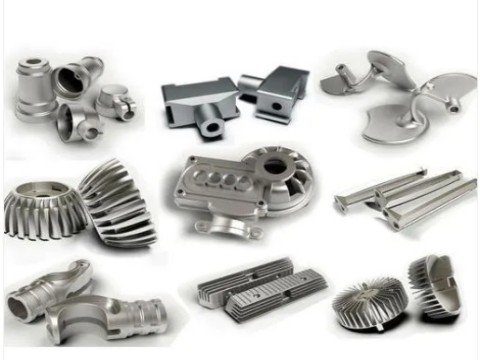
Key Die-Casting Process Parameters
Zinc alloy die-casting requires precise control of the following parameters (compared to aluminum alloys):
| Parameters | Zinc Alloy Range | Aluminum Alloy Range | Control Target |
| Melting Temperature | 420–480°C | 700–750°C | Prevents oxidation and maintains uniform composition |
| Mold Temperature | 150–220°C | 180–250°C | Reduces thermal shock and improves surface finish |
| Shot Pressure | 20–80 MPa | 30–100 MPa | Ensures complete filling and avoids porosity |
| Filling Time | 0.05–0.2 seconds (thin-walled parts) | 0.1–0.3 seconds | Prevents turbulent air entrainment |
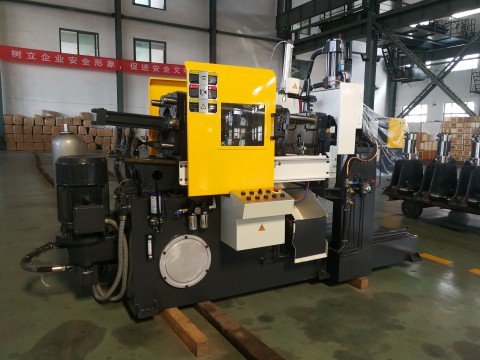
Haichen zinc alloy die casting machine
Haichen is a die casting machine factory located in Ningbo, China, mainly supplying cold chamber die casting machine and hot chamber die casting machine. Besides machines, we also supply die casting auxiliary equipments, including temperature control equipment, ladles and extractors and so on.
Haichen zinc alloy die casting machine offers a combination of high efficiency, precision, energy efficiency, durability, and cost-effectiveness, making it an excellent choice for manufacturers looking to produce high-quality zinc alloy parts.
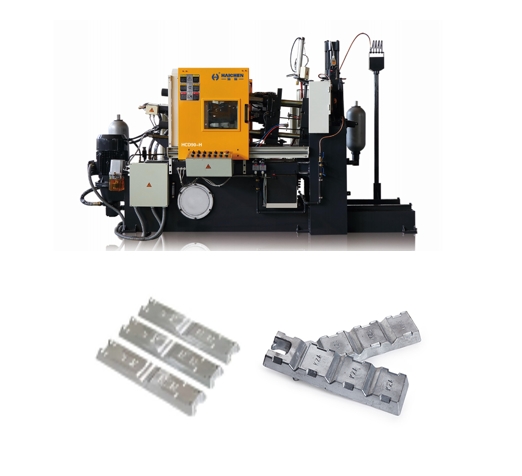
Zinc alloy is a versatile metal material that plays an important role in modern industry due to its unique properties and wide range of applications.



